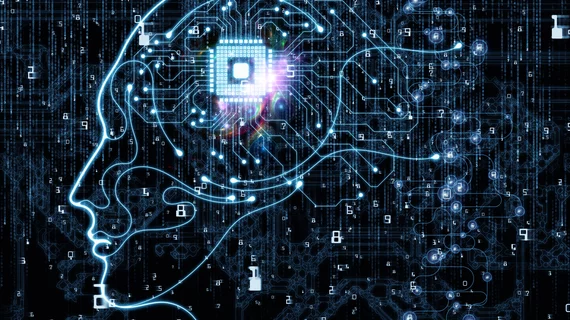RSNA 2018: Behind the scenes at this year's Machine Learning Showcase
Artificial intelligence (AI) is changing how radiologists think about and perform studies, so it’s no surprise AI and machine learning will take center stage this year at RSNA 2018 in Chicago.
“Last year was pretty eye-opening in regard to how much activity there was and interest there was in this [AI] space,” Safwan Halabi, MD, department of radiology at Stanford University in California, told Radiology Business in a phone interview leading up to RSNA 2018. “A lot of the lectures and scientific presentations were standing room only.”
This year, Halabi said, AI will be more apparent in nearly all aspects of the conference, including its Machine Learning Showcase. Radiologists and other industry professionals will be able to interact with more than 80 companies, including many startups, focused on the latest developments in AI software and products. Attendees can also view presentations on trending topics in AI, machine learning and deep learning.
Halabi, a clinical associate professor at Stanford, will be presenting at the hall on Wednesday, Nov. 28, during the “Machine Learning Theater: RSNA Artificial Intelligence and Machine Leaning Initiatives” session. He explained that many attendees will visit the hall as they begin to figure out whether or not they will get involved with AI. They will also be able to see the many tools available to purchase and see if any make sense for their specific practice.
The relationship between startups and larger legacy vendors is something to watch out for this year, Halabi said.
“Everyone’s trying to develop an AI marketplace, but how do you validate those tools?" he asked. "How do you know what tools to buy? Whose going to give the stamp of approval for these things?” As a result, Halabi said he expects a lot of discussions to emerge about standards and implementation.
Another highlight at the hall, Halabi noted, will be the National Cancer Institute’s Crowds Cure Cancer exhibit. Attendees can sit down with images and help annotate or segment tumors which will later become annotations for cancer research
Overall, Halabi said he believes attendees will leave the meeting focused on areas of AI that typically don’t receive a majority of the hype.
“There’s a lot of focus on diagnosis in imaging or replacing the radiologist, but I think the bigger arena for this is non-interpretive or non-pixel-based AI,” he said. “Things like scheduling patients or displaying images in a PACS workflow. All of those things are ripe for disruption and I think that’s what people would be much more excited about.”
The Machine Learning Showcase Hall is open 11 a.m. to 2 p.m. each day of RSNA 2018. Halabi's presentation is Wednesday, Nov. 28, at 10:30 a.m. More information is available on the RSNA 2018 interactive program.

